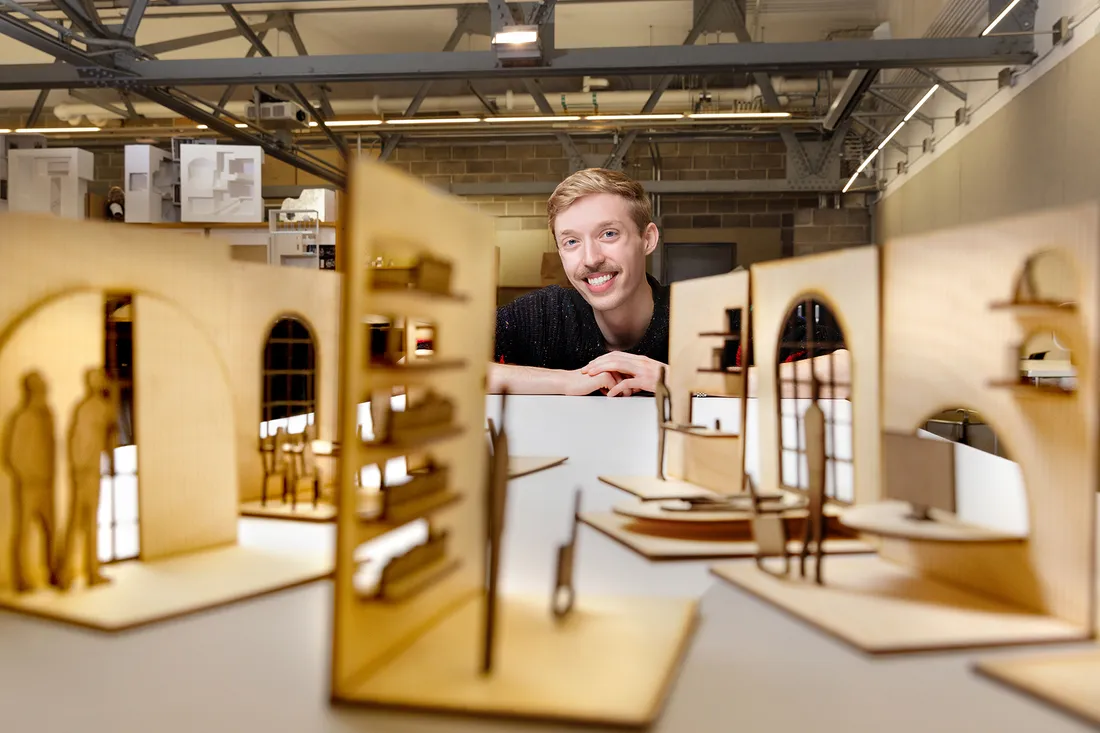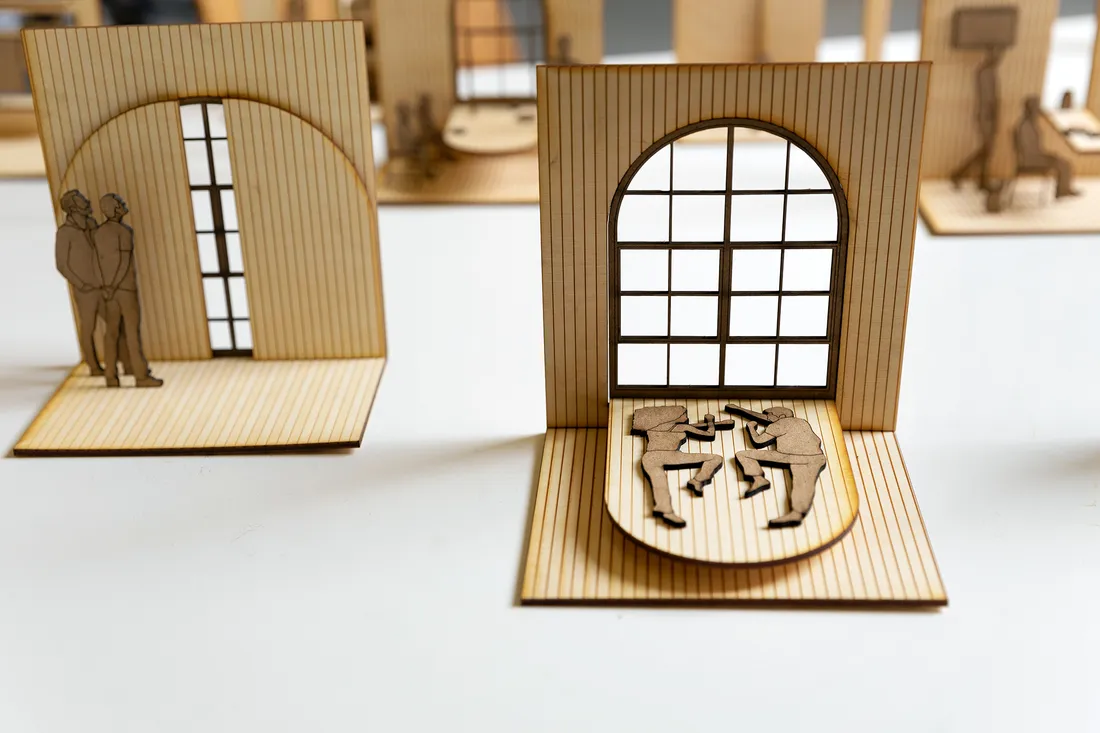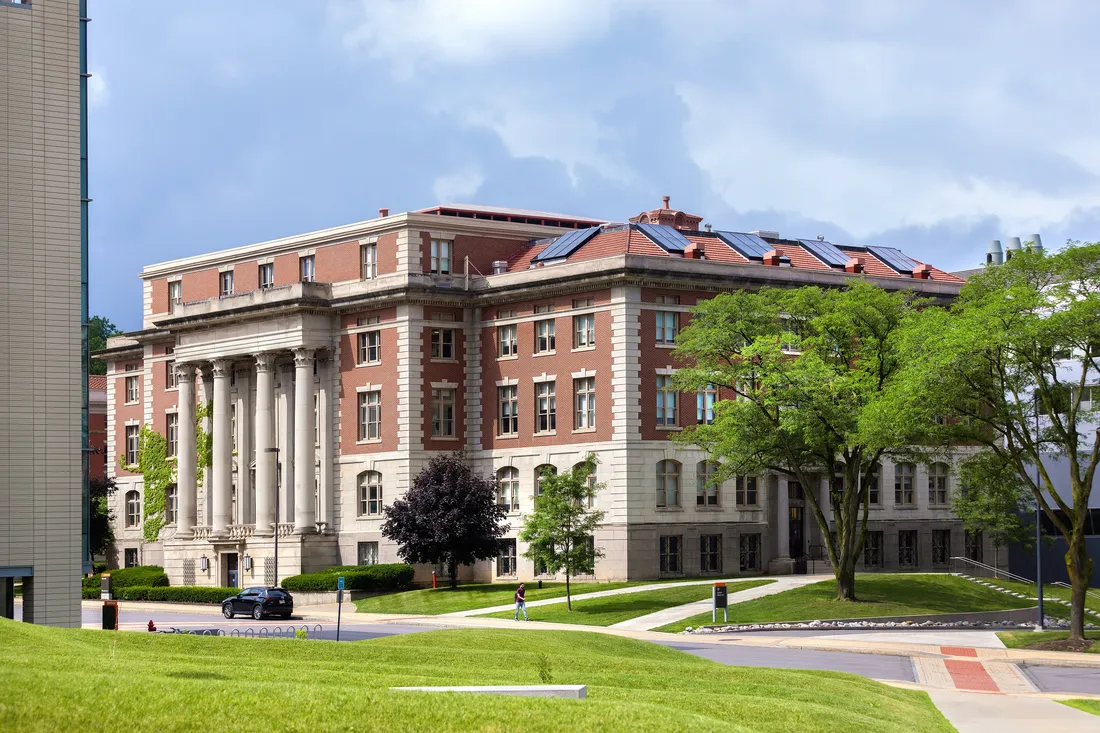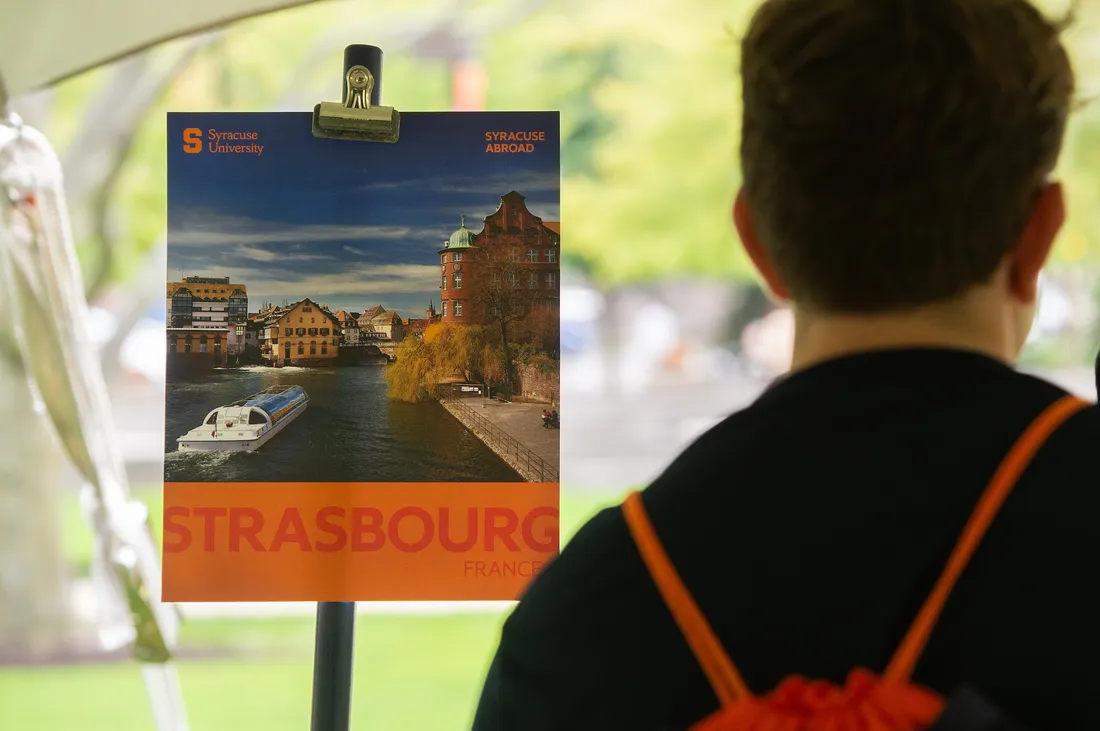
Erik Bakken ’22 aims to use the skills he gained from the School of Architecture to design an interdisciplinary blueprint for sustainable urban growth.
On a recent trip to Finland to research his thesis, Syracuse University architecture student Erik Bakken ’22 studied sustainability in architecture—specifically, the connection between sustainable forest management and contemporary timber construction. “My thesis research weaves together issues of material exchange, carbon sequestration, ecology and climate change,” says Bakken, a fifth-year student in the School of Architecture. “Addressing these intersections through design is what architects must do to contribute to a more sustainable future of the built environment.”
While in Finland, Bakken had conversations with experts and learned more about designs that take advantage of natural resources while preserving their longevity. “Ultimately, I aim to use the collaborative skills I gained from the School of Architecture and the University as a whole to design an interdisciplinary blueprint for sustainable urban growth,” he says.
Bakken will represent the School of Architecture as a class marshal during Commencement 2022. He was also selected as a University Scholar—one of 12 seniors chosen each year by a Universitywide faculty committee using criteria that include coursework and academic achievement, independent research and creative work, and evidence of intellectual growth or innovation in their disciplinary field.
Ultimately, I aim to use the collaborative skills I gained from the School of Architecture and the University as a whole to design an interdisciplinary blueprint for sustainable urban growth.
Erik Bakken ’22
He credits the School of Architecture for fostering his passion and advancing his research. “Studying architecture at Syracuse has given me creative, technical and collaborative skills that have broad applicability, not only in my field,” he says. “I have learned to address problems in the world at varying scales and through diverse perspectives.”
Advancing Through Leadership
Growing up a “proud Midwesterner” in Appleton, Wisconsin, Bakken spent a lot of time outdoors and developed a love of buildings that reflected and amplified their natural surroundings. “As a kid, I knew I loved architecture but had no connections to the profession and was hours away from any big city,” he says.

Erik Bakken ’22 studies how mixed-species cross-laminated timber can be cut and folded to minimize material waste.
He applied to several architecture programs, but was most impressed with Syracuse University. “It was the only top-ranked architecture school I visited that felt like home,” he says. “Syracuse’s School of Architecture is rigorous and creatively challenging, and the sense of community among the students leads to a vibrant and collaborative environment.”
Bakken was awarded a full-tuition scholarship and immediately intrigued by the academic opportunities, especially those offered by the Renée Crown University Honors Program. “The honors program was a unique aspect of Syracuse that I was drawn to—a chance to take courses outside of my discipline and expand my horizons,” he says.
Syracuse’s School of Architecture is rigorous and creatively challenging, and the sense of community among the students leads to a vibrant and collaborative environment.
Erik Bakken ’22
Despite his rigorous academic schedule, Bakken has made time for opportunities to get involved on campus, and he is an active member of the School of Architecture community. He has been a peer advisor, dedicated to making first-year students feel welcome within the Syracuse Architecture community. He also acted as a key member of the school’s Student Mentor Squad, a group of exemplary fourth- and fifth-year architecture students who foster relationships with newer students.
Noting that one-on-one interaction was incredibly important when he searched for colleges, he also became an Architecture Ambassador, leading tours of the school and meeting prospective students and their families. “I enjoy being able to share my experiences with prospective students who are considering architecture and Syracuse,” he says.

Orange Appeal a cappella group with Otto the Orange in downtown Syracuse. Photo credit: Sam Cote.
As a creative outlet, Bakken joined Orange Appeal, Syracuse University’s premier tenor-bass a cappella group. He held leadership roles, serving first as the business director and ultimately as president. He says it’s important for others to pursue their diverse passions through opportunities beyond their majors. “While it may not seem as though there is much in common between architecture and a cappella, the connections I’ve found have helped me to be a more collaborative and creative designer and leader,” he says. “Leading the a cappella group has given me confidence in my ability to manage my own architecture firm one day.”
A Formative Experience

“Addressing these intersections through design is what architects must do to contribute to a more sustainable future of the built environment,” Bakken says.
Another reason Bakken chose Syracuse was the opportunity to explore architecture in Florence, Italy, through the University’s study abroad program. “Studying iconic buildings that I had only seen in images, and spending time with my class while immersed in the rich culture in Florence was life changing and exhilarating,” he says.
Although his trip abroad was cut short by the start of the pandemic, he gained valuable experience. “My time abroad in Florence made me into a more empathetic and conscientious designer,” he says. “I know I can collaborate with and learn from cultures across the globe, something that was valuable as I worked with some of the world’s preeminent experts in my thesis work.”
Making an Impact
Bakken has worked as an intern with Genesis Architecture in Wisconsin for the past three years during summer and winter breaks. The firm is known primarily for Prairie and Usonian homes and is led by one of the leading experts in the work of American architect Frank Lloyd Wright.
My internship connected my interests in research and design through a project that showcases both the community and new ways of thinking about affordable living spaces.
Erik Bakken ’22
He also interned with studioSUMO through Syracuse Architecture’s NYC Internship Program in summer 2021. He and a team of Syracuse students developed an affordable housing prototype and museum installation in Bentonville, Arkansas. “Architecture should not be solely for the wealthy, and through this internship experience I learned more about how space can be efficiently designed to be beautiful, functional and accessible,” he says.
Bakken played an instrumental role in developing a full-scale installation of the design that will be completed at the Crystal Bridges Museum of American Art. “My internship connected my interests in research and design through a project that showcases both the community and new ways of thinking about affordable living spaces,” he says.
The Path Ahead
After graduation, Bakken will begin work as an architectural designer for KVA MATx (Kennedy & Violich Architecture) in Boston. His role will focus on design research initiatives in wood construction, flat-to-form design and biomaterials.
He aims to become a licensed architect and to one day be a leader and advocate for sustainability in the industry on both local and global scales. “I hope to continue developing my passion for sustainable design and the natural environment while pushing architecture to become a more carbon neutral or negative field,” he says. “As architects, we have the power and responsibility to shape what the future looks like.”


